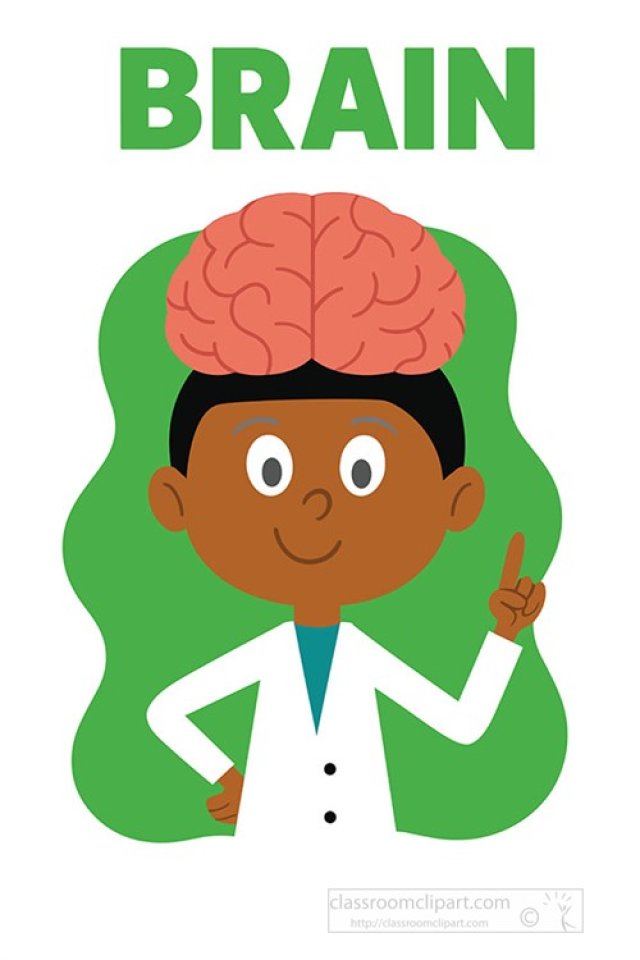The Brain: Thinking, Moving, and Keeping You Alive

🧠 The Brain: Thinking, Moving, and Keeping You Alive
Your brain is the most important organ in your body. It helps you think, feel, move, remember, learn, and stay alive. Even though it weighs only about 3 pounds, it’s incredibly powerful—and it never stops working, even when you're asleep.
The brain is made of billions of nerve cells called neurons, and it’s protected by the skull. It also floats in a special fluid to keep it cushioned and safe. The brain works closely with the spinal cord and nerves to send and receive messages all day, every day.
To better understand how the brain works, scientists divide it into three main parts: the cerebrum, cerebellum, and brainstem. Each part has its own job, but they all work together to keep you going.
🧠 Cerebrum: The Thinking and Feeling Brain
The cerebrum is the largest part of the brain, divided into two halves called hemispheres (left and right). Each hemisphere controls the opposite side of your body.
The cerebrum is in charge of:
- Thinking and decision-making
- Memory and learning
- Emotions and personality
- Movement and coordination
- Reading, writing, and language
The outer layer, the cerebral cortex, is full of ridges and grooves that boost its processing power. Its four lobes have specialized roles:
- Frontal lobe – planning, problem-solving, and voluntary movement
- Parietal lobe – touch, temperature, and spatial awareness
- Temporal lobe – hearing and language
- Occipital lobe – vision
🧠 Cerebellum: The Balance and Movement Brain
The cerebellum sits under the cerebrum at the back of your head. Though only about one-eighth of your brain’s size, it’s essential for smooth movement and balance.
It helps you:
- Balance and stand upright
- Coordinate muscle movements
- Fine-tune actions like writing or riding a bike
- Learn new motor skills
🧠 Brainstem: The Survival Brain
The brainstem connects the brain to the spinal cord and controls vital functions you don’t think about, such as breathing and heartbeat.
It has three parts:
- Midbrain – controls eye movements and processes sounds
- Pons – regulates breathing and sleep, relays signals
- Medulla oblongata – controls heart rate, swallowing, and blood pressure
🔄 How the Brain Communicates
The brain sends messages via electrical signals and chemical messengers through the spinal cord and nerves:
- You see a soccer ball (signal to cerebrum).
- You decide to kick it (frontal lobe plans).
- A message travels down your nerves to your muscles.
- Your cerebellum coordinates the movement.
- Your brainstem keeps you breathing as you play.
🛡️ Protecting Your Brain
Your brain is shielded by:
- Skull – hard bone casing
- Cerebrospinal fluid – cushions and removes waste
- Meninges – three protective tissue layers
- Healthy habits:
- Wear a helmet
- Get enough sleep
- Eat brain-boosting foods
- Stay physically and mentally active
🎉 Fun Facts About the Brain
- Your brain uses about 20% of your body’s energy.
- It sends signals faster than a race car.
- The cerebrum makes up about 85% of the brain’s weight.
- Your brain is about 75% water.
- The brain itself feels no pain, but it controls how you experience pain.
🧠 Vocabulary List
- Cerebrum – the thinking and feeling part of the brain
- Cerebellum – controls movement and balance
- Brainstem – regulates vital life functions
- Hemisphere – one half of the cerebrum
- Cerebral cortex – the brain’s wrinkled outer layer
- Neurons – nerve cells that carry messages
- Frontal lobe – planning and movement
- Occipital lobe – vision
- Pons – connects brain regions and helps breathing
- Medulla oblongata – controls heartbeat and blood pressure
🧒 Kid-Friendly Summary
Your brain has three amazing parts: the cerebrum (helps you think), the cerebellum (helps you move), and the brainstem (keeps you alive). They work together like a super team to help you learn, move, feel, and stay healthy. Take care of it with sleep, good food, exercise—and always wear a helmet when you need one!



















































